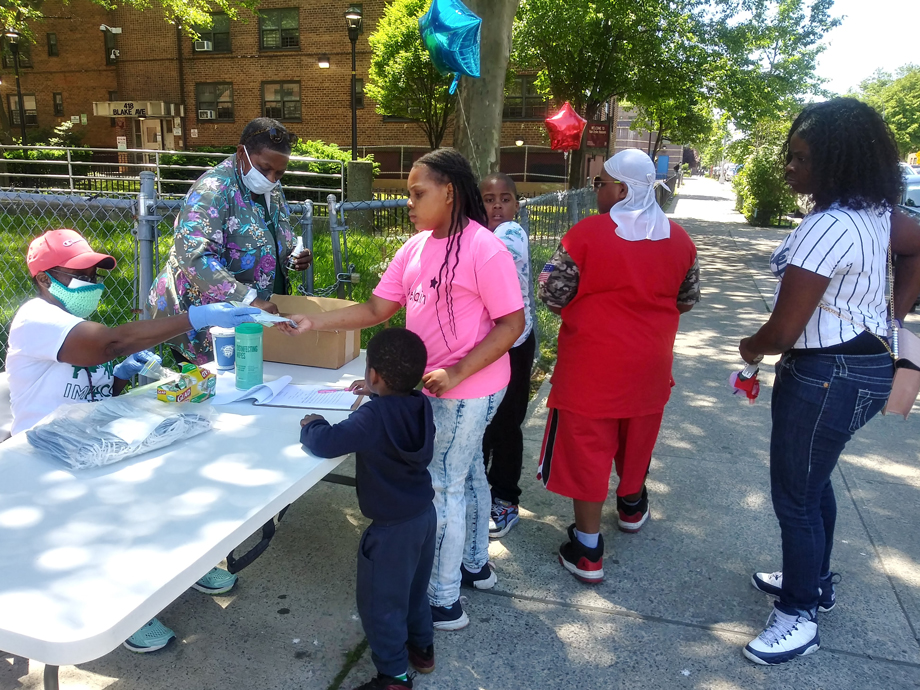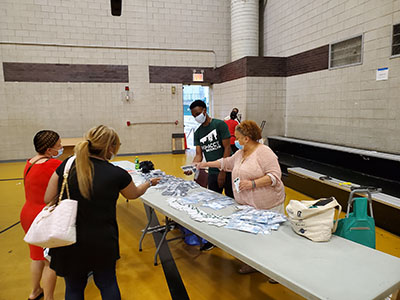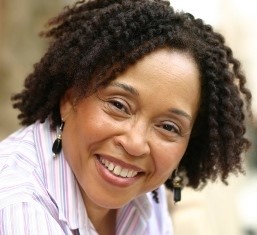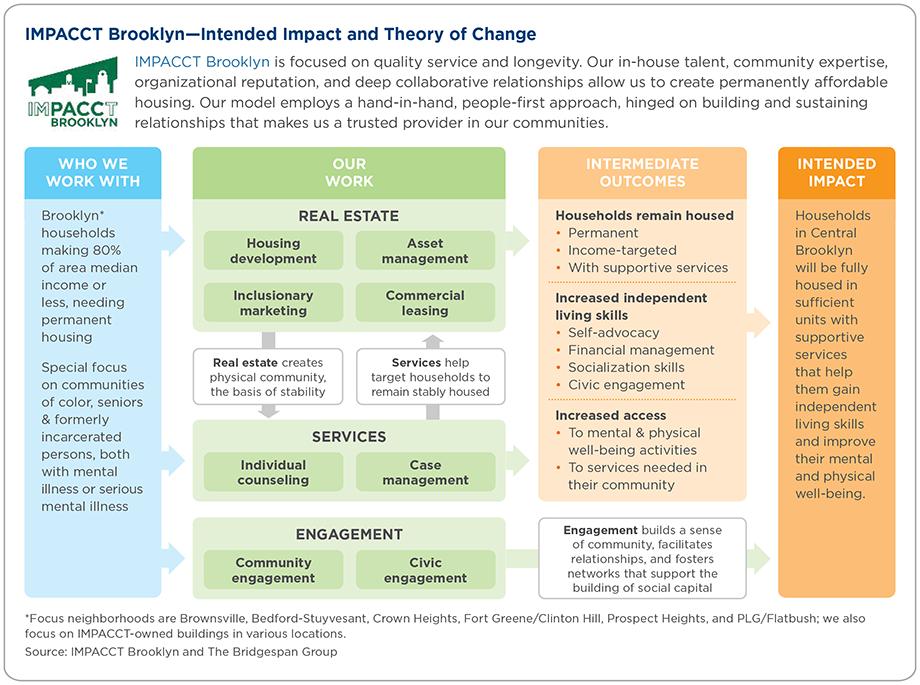Nonprofits with distinct program areas or service lines are sometimes described as multi- service organizations (MSOs). Often their program areas function fairly independently of each other and have different funding streams. MSOs generally fall into one of two types: (1) MSOs with one population of focus that engages in multiple programs, often in a continuum, or (2) MSOs with multiple populations of focus, where each population participates in a single standalone program.
For more on intended impact and theory of change see our collection of case studies, articles, and tools on the topic.
For both types of MSOs embarking on a refresh of their intended impact and theory of change, it is helpful to define what success looks like both from a program area and an organization-wide perspective. It’s also important to articulate how the different program areas each contribute toward the organization-wide intended impact.
MSOs that provide a continuum of supports to one population of focus should clarify how their program areas link to one another and aim to understand how many clients are actually moving through the continuum as intended. Their final theory of change should help explain why the organization is doing this collection of activities, and how each element helps lead to the impact they aspire to achieve.

IMPACCT Brooklyn
Overview
Mission: To create thriving, safe, sustainable communities in Brooklyn, keeping households in place for the long term.
Intended Impact: Households making 80 percent of area median income or less in Central Brooklyn will be fully housed in sufficient units with supportive services that help them gain independent living skills and improve their mental and physical well-being.
Theory of Change:
- We build, preserve, and market affordable housing because fulfilling the fundamental right to affordable housing is a cornerstone for establishing human well-being, preventing displacement, and enhancing economic, racial, and cultural diversity.
- We provide social services designed to help low-income households remain stably housed because living below the poverty line affects every aspect of a person’s life.
- We conduct community and civic engagement to help inform, organize, and galvanize members of the community, because residents, acting together toward common objectives, can oppose unnecessary displacement, demand accountability from private developers and public officials, and otherwise contribute to the greater good.
Founding year: 1964
Field: Community development
Revenue: $5.6 million (2021) fiscal year
Geography/footprint: Brooklyn, New York
Website: https://impactbrooklyn.org

IMPACCT Brooklyn’s Executive Director Bernell K. Grier describes a few of the challenges and breakthroughs that the organization faced as it refreshed its intended impact and theory of change.
Defining success from a program area and organization-wide perspective
One of the most important parts of defining success was getting clearer about who we serve as an organization. We had gone from serving a particular catchment area within Brooklyn to serving all of Brooklyn. But we needed to get clearer about that—do we actually serve all of Brooklyn? We serve everyone, but our focus is on communities of color. Our staff and clients are 95 percent people of color, and our board is also very diverse. In thinking about our intended impact, we fine-tuned that we’re focused on Central Brooklyn—and named specific neighborhoods where many of Brooklyn’s Black residents live.

IMPACCT Brooklyn
Early on, we also aligned on what we do across all of our efforts: develop community. It was important for us to define what we mean by that—it’s about people working, shopping, keeping healthy, thriving. All of these are pillars of developing community and needed to stay.
Once the organization aligned on what we wanted to achieve, for whom, and where—our intended impact—we were better equipped to determine how to achieve it through our main areas of work: real estate, social services, and civic and community engagement.
Articulating how different program areas each contribute toward the organization-wide intended impact, and how they link to one another
We were all over the place in terms of what we did and how we did it. Each of our main approaches to achieving our impact goals comprises a variety of programs, like marketing, asset management, or commercial leasing. In the past, we’d speak about them as silos, describing the individual services and who each one serves. Additionally, we had often been doing things because different partners were pushing us to fill a critical need in the community—for example, resiliency in flood zones, even though central Brooklyn is not a flood zone. This process of thinking through our intended impact and theory of change helped clarify whether and how the different pieces of our organization fit together, and how they contribute toward a common goal.
We invested a lot of time in articulating the main approaches critical to achieving our impact goals—real estate, social services, and community and civic engagement—each of which constitute a variety of distinct programs. We then identified the linkages between each of these approaches—how did they inform and reinforce one another to help us develop thriving, safe, and sustainable communities in Central Brooklyn? For example, we found that our commercial leasing work, providing spaces for small businesses to thrive, is becoming even more of a lead in driving development. But does it really fit? Where we landed is that it does fit within the work we do. Commercial leasing to small businesses is a part of economic growth, and generates income for the people and communities that we want to focus on.
This work also prompted us to think about how we link our portfolio services for our clients. For example, those facing eviction may also benefit from financial education and counseling, while our social service clients seeking housing can benefit from information regarding housing lotteries. We currently do not have a system to track a person or family through all of our services and yet it would be great to have.
The fact that we put together a cross-functional team to work on our intended impact and theory of change really helped us identify these linkages. We brought together program and real-estate development staff as well as our controller. There were people who worked at IMPACCT Brooklyn for 15 years, along with people who just joined in the last two years. The learning and conversation has been amazing. For example, our controller, who wasn’t involved in day-to-day program work, asked some hard questions that helped us think about how we can better integrate our programs and services like case management for residents not living in our supportive housing units. Now, we’re using the work we did on intended impact and theory of change as a strategy screen as we review opportunities and decide whether to accept or reject an opportunity.


